Want to enjoy movies like never before? A small home theater can transform any room into your private cinema. You don’t need a huge space or a big budget to build something amazing.
With thoughtful planning and good design choices, even tiny rooms can become incredible entertainment spaces.
The key is making every square foot count while creating an immersive experience that rivals commercial theaters.
From basement conversions to spare bedroom makeovers, your perfect movie sanctuary awaits. Success comes from understanding your space limitations and working with them, not against them.
Modern technology makes it easier than ever to create professional-quality audio and video in compact areas.
Best Rooms for a Small Home Movie Theater
Basements work great for home theaters because they’re naturally dark and quiet. Most basements are long and narrow, which is perfect for watching movies.
Spare bedrooms are another popular choice since you can easily control the light and sound. Plus, you can close the door when you want privacy during movie time.
Living rooms can work too if you plan carefully. You’ll need furniture that serves two purposes – during the day, it’s a normal living room, and at night, it becomes your theater. Some people even use garages or attics, though these spaces need proper heating and cooling first.
The most important factor is choosing a room where you can control the lighting effectively.
Small Home Theater Room Layout
The shape of your room matters a lot for optimal viewing. Rectangle rooms work best because they provide natural sightlines and sound distribution. Put your screen on the shorter wall to maximize viewing distance.
This gives everyone a good view without neck strain. For a typical 10×12 room, place your seating 8-10 feet from the screen.
This distance feels comfortable and won’t strain your eyes during long movies. Keep walkways clear so people can move around without bumping into furniture.
Think about where people will sit and how they’ll get there safely in low light. Consider the room’s natural traffic patterns and work with them.
Plan your electrical outlets early since you’ll need power for your equipment in specific locations.
Small Home Theater Design Ideas and Styles
Your design style sets the mood for every movie night. The right approach can make a small room feel spacious and inviting while creating the perfect atmosphere for entertainment. Consider your family’s preferences and how the space will be used beyond movie watching.
1. Modern Clean Look
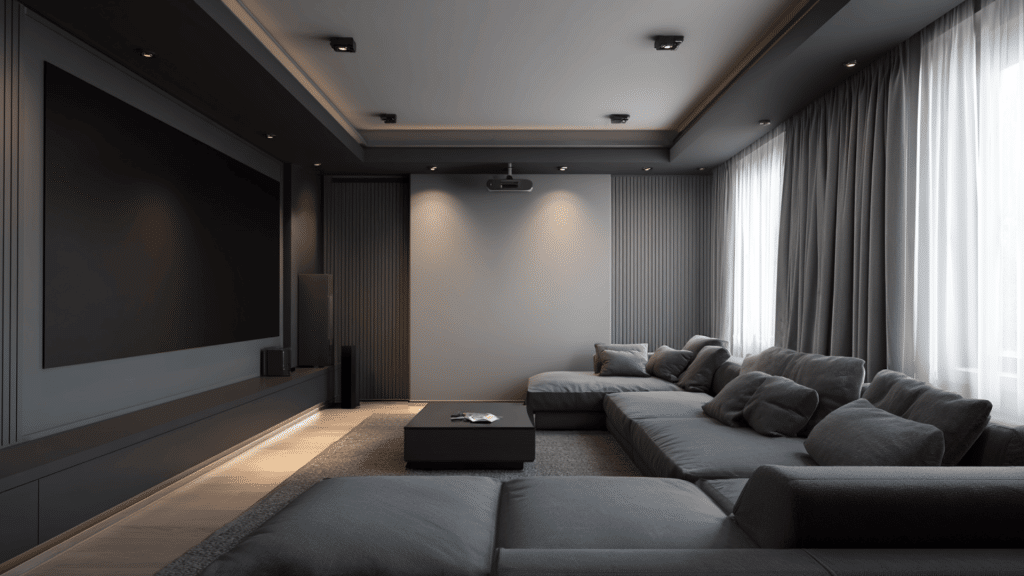
A simple, clean design makes small rooms feel bigger. Choose furniture with straight lines and smooth surfaces. Avoid items with lots of decorative details.
Use colors like black, white, and gray. These colors work well together and don’t fight for attention. Your movie screen becomes the main focus.
Hide cables and equipment inside cabinets. This keeps the room looking neat and organized.
2. Cozy Traditional Style
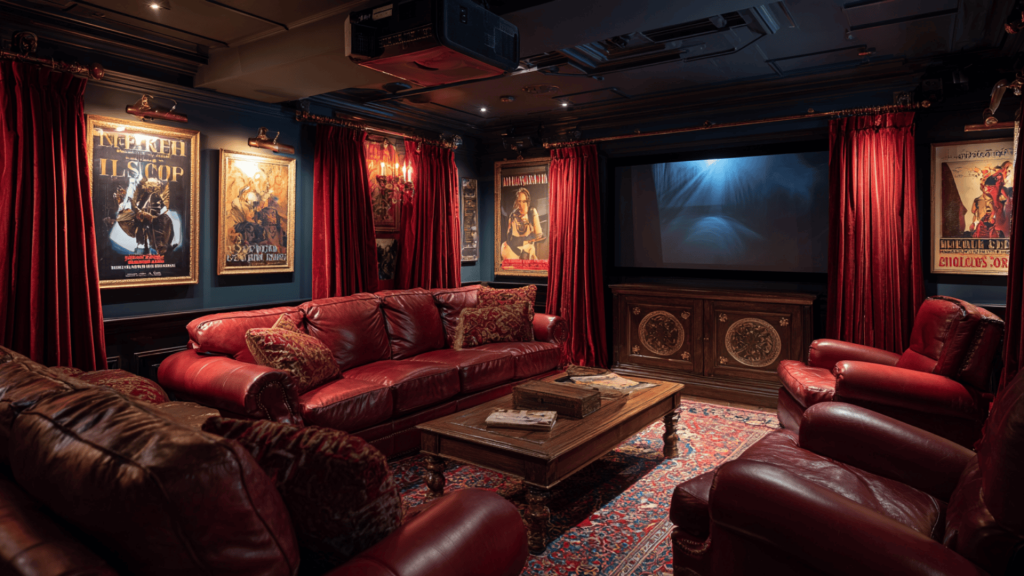
If you like warm, comfortable spaces, try a traditional design. Use rich colors like deep red, green, or blue. These darker colors help control light and make the room feel cozy.
Add soft fabrics like velvet curtains and leather seats. Put up framed movie posters on the walls. Choose items that match your color scheme.
3. Industrial Modern Style
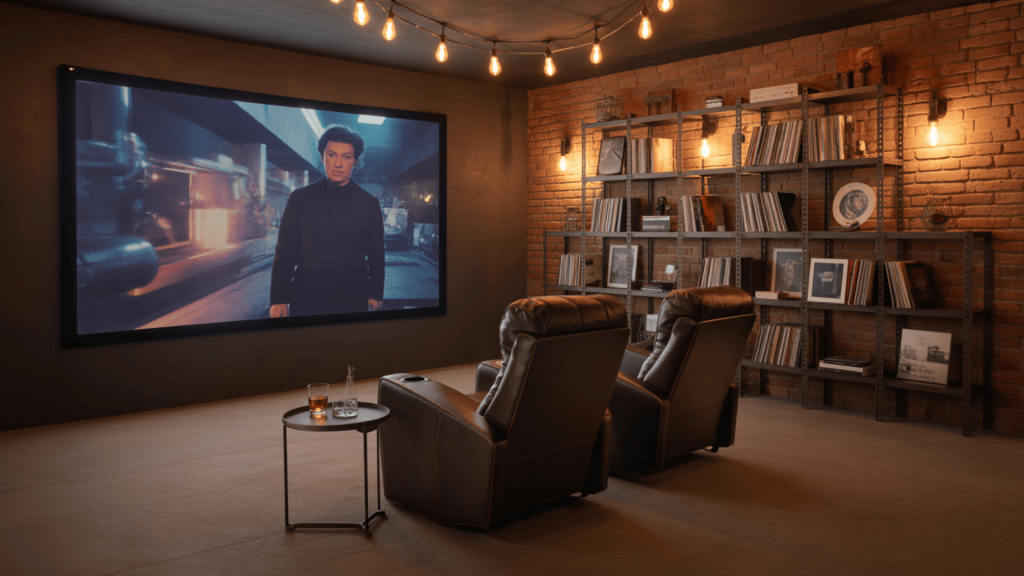
This style works great in basements or garages. Leave brick walls uncovered. Use metal and concrete as design elements.
Add lighting with exposed bulbs. Use metal shelves and brown leather furniture. The neutral colors create a cool, modern look.
Space-Saving Home Theater Seating Solutions
Comfortable seating is the foundation of any great home theater experience. In small spaces, your seating choices need to work harder, serving multiple purposes while maximizing comfort for every viewer.
4. Making the Most of Limited Space
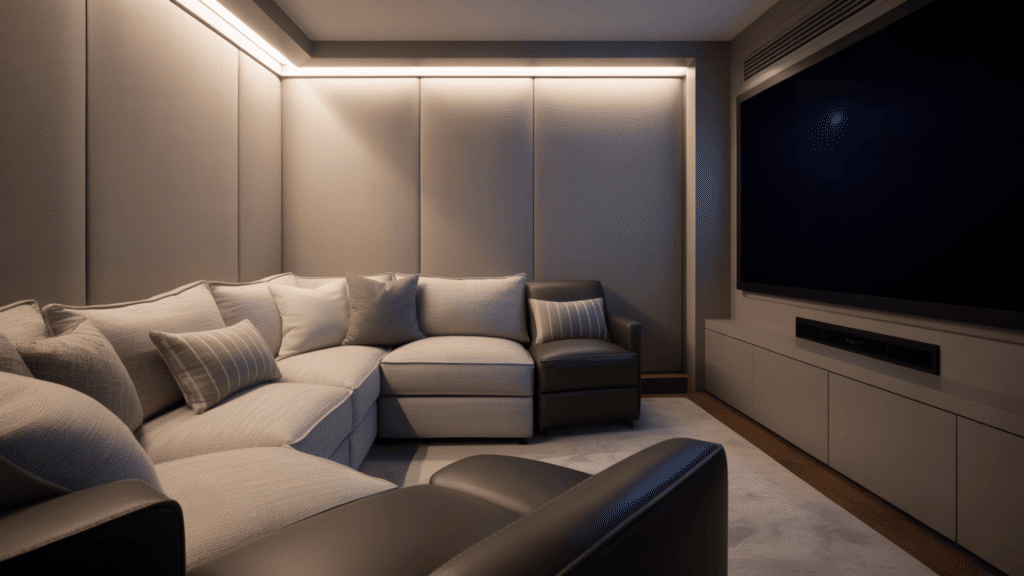
Sectional sofas offer the most seating in the least amount of space. L-shaped designs work well in square rooms. Look for sofas with storage built in.
Recliners offer luxurious comfort without occupying too much space. New designs don’t need much space behind them. Some can sit just inches from the wall.
5. Creative Seating Options
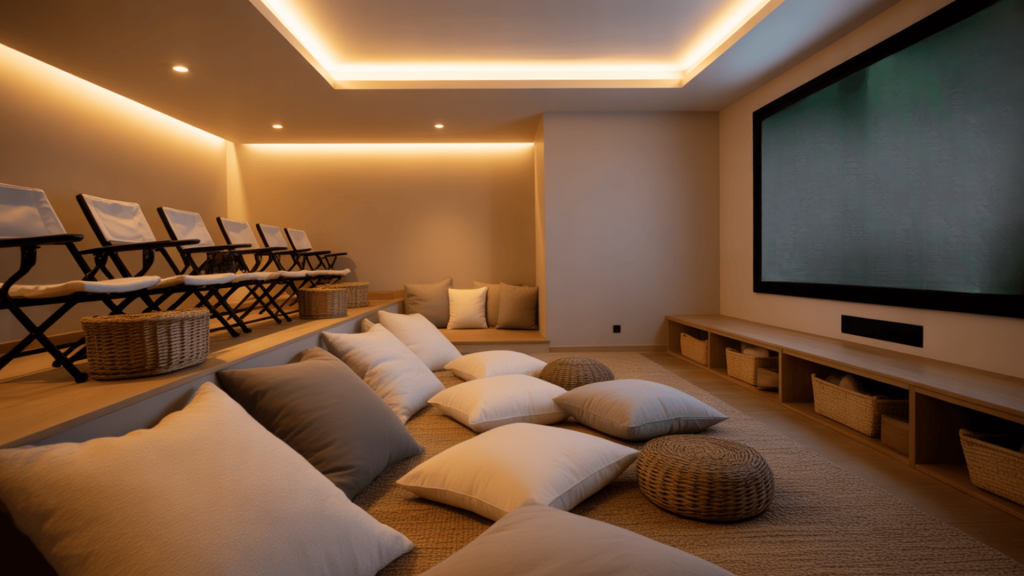
Portable risers can create stadium-style seating. You can store them away when not needed. This works great for families with kids.
Floor cushions and big pillows give you flexible seating. People can move them around based on how many are watching. Store them in baskets or benches when not in use.
Home Theater Lighting Ideas
Proper lighting can transform your space from an ordinary room to a cinematic experience. The right lighting design creates ambiance while ensuring safety and functionality during movie nights.
6. Creating the Right Atmosphere
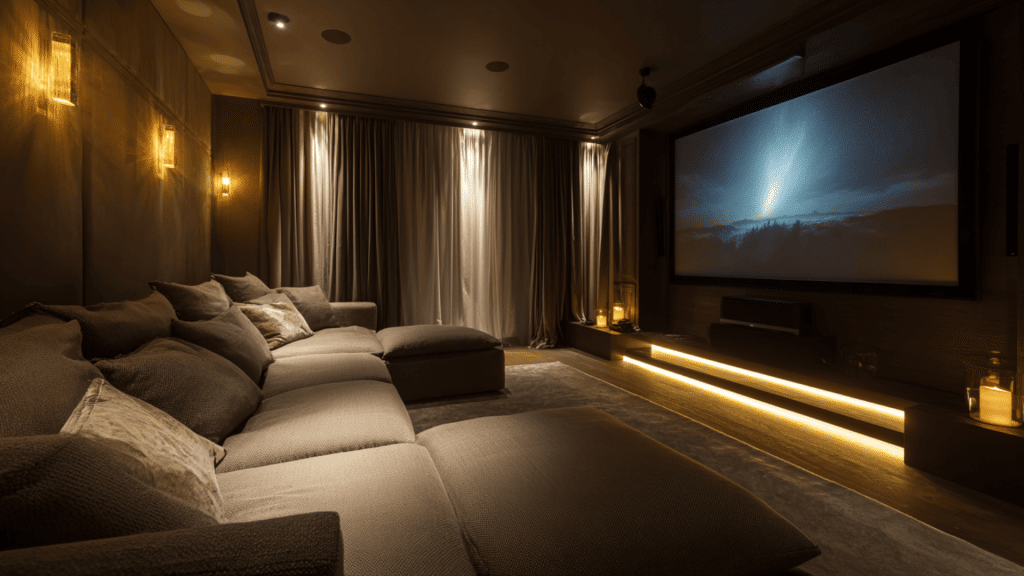
LED strips behind your screen or around the room provide soft light. You can dim them when movies start and brighten them during breaks.
Wall lights at eye level create a warm feeling. Choose bulbs that give off warm, yellow light instead of cool, blue light.
Smart lighting lets you create different settings. You can have bright light for cleaning and dim light for movies.
7. Adding Visual Interest
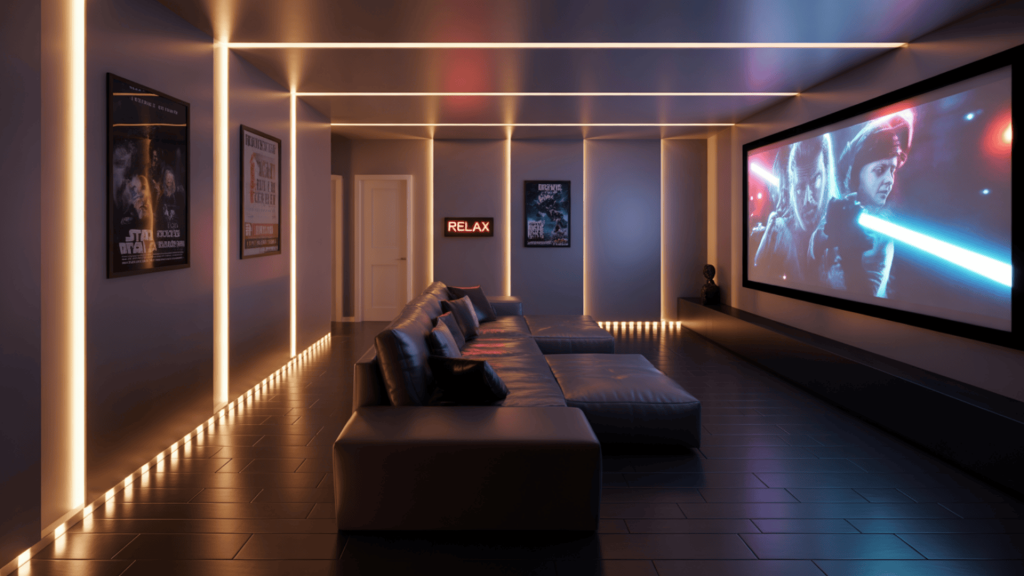
Rope lights along the floor help people find their seats in the dark. You can control these separately from your main lights.
Backlit posters and lighted signs add personality to your space. Color-changing LEDs let you change the mood based on what you’re watching.
Small Home Theater Wall Design and Color Schemes
The visual foundation of your theater starts with walls and color choices. These elements work together to create the right atmosphere while making your small space feel larger and more inviting.
8. Wall Treatments
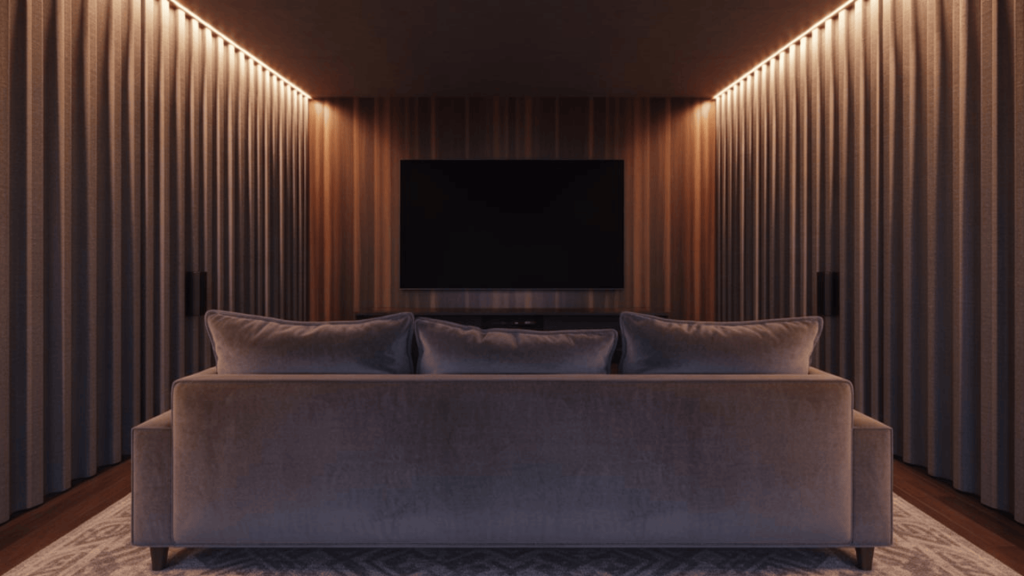
Fabric panels on walls improve sound quality and add texture. Choose colors that match your room’s theme.
Wood paneling adds warmth and makes plain walls more interesting. Accent walls using different materials can make your space feel bigger.
9. Choosing Colors
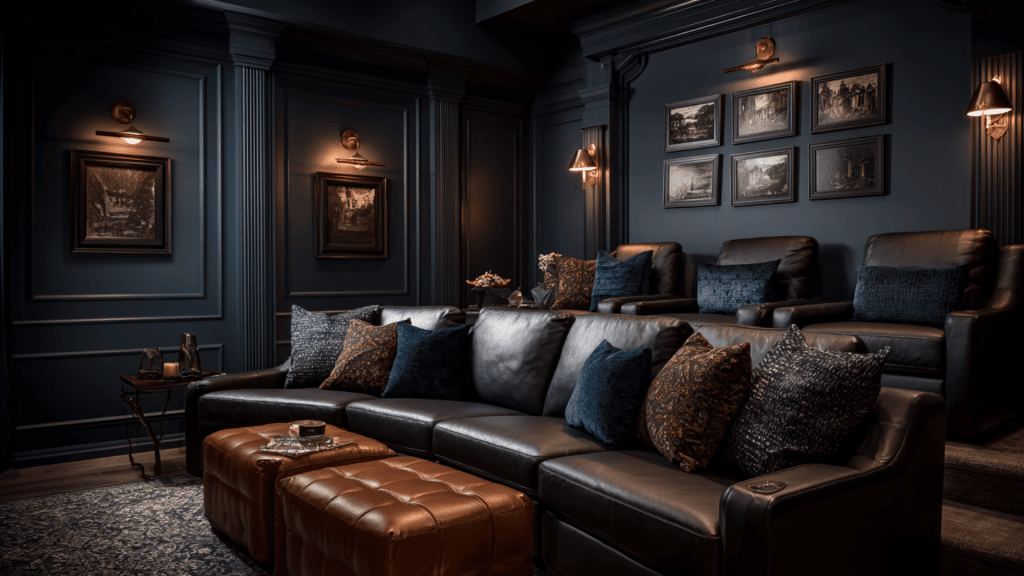
Dark colors work best for movie watching. Charcoal gray gives you the benefits of black without feeling too dark. Deep blue and dark green add warmth while still controlling light.
Use accent colors sparingly. Small touches of gold or copper can add luxury. Jewel tones work well for pillows and decorations.
10. Creative Storage Solutions for Home Theater Rooms
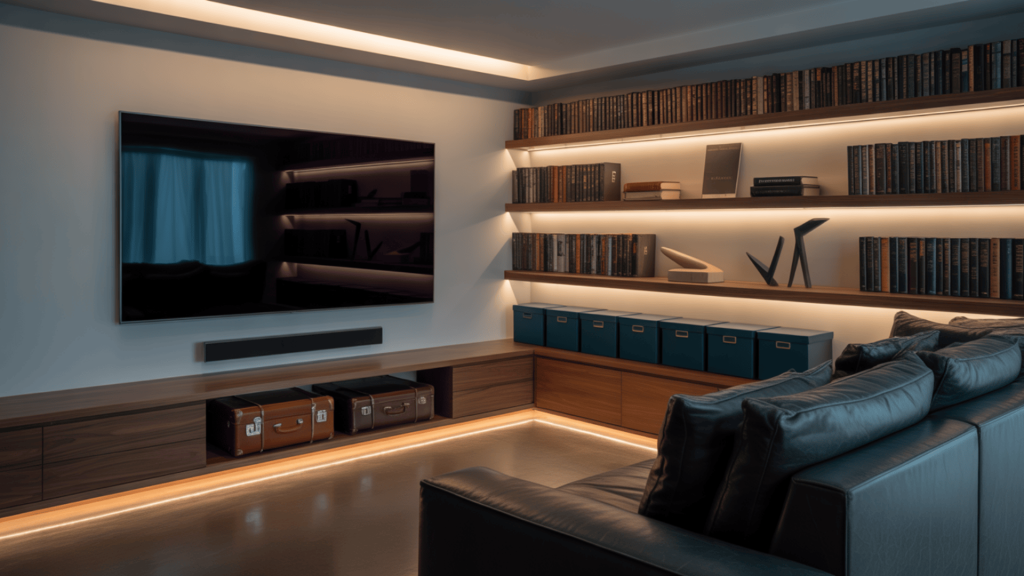
Wall-mounted storage saves floor space and keeps movies easy to reach. Floating consoles make rooms feel bigger while providing surfaces for decorations.
Storage boxes in matching colors can hold smaller items while adding to your room’s look. Vintage cases or old trunks provide storage with character.
Budget-Friendly Home Theater Decorating Ideas
The final details bring your theater to life and reflect your personal style. These finishing touches transform a functional space into a true entertainment destination.
11. Movie-Themed Decorations
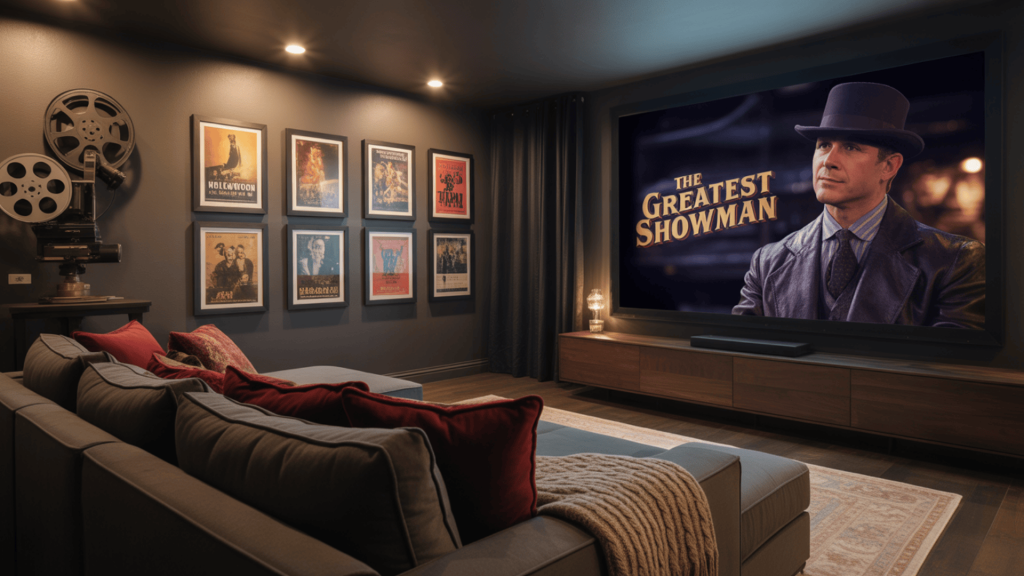
Old movie posters are classic theater decorations. Group them together in matching frames for a bigger impact. Lighted movie signs add a real theater feeling.
Film reels and vintage cameras add interest to walls. Custom signs with your family name or favorite movie quotes make the space yours.
12. Comfort Items
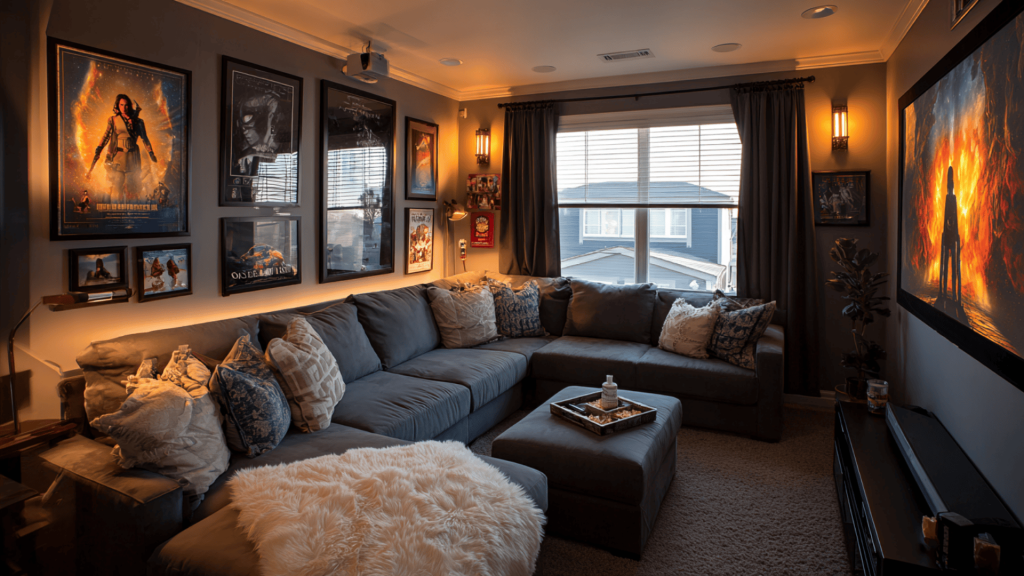
Throw blankets and decorative pillows add comfort and style. Choose fabrics that resist stains and fading.
Side tables near seating provide places for drinks and snacks. Temperature control is important in small spaces. Ceiling fans can provide air flow without noise.
Blackout curtains or motorized shades control light while adding texture to windows.
DIY Home Theater Projects on a Budget
Creating an amazing home theater doesn’t require spending a fortune. With smart planning and creative solutions, you can achieve professional results while staying within your budget.
13. DIY Projects
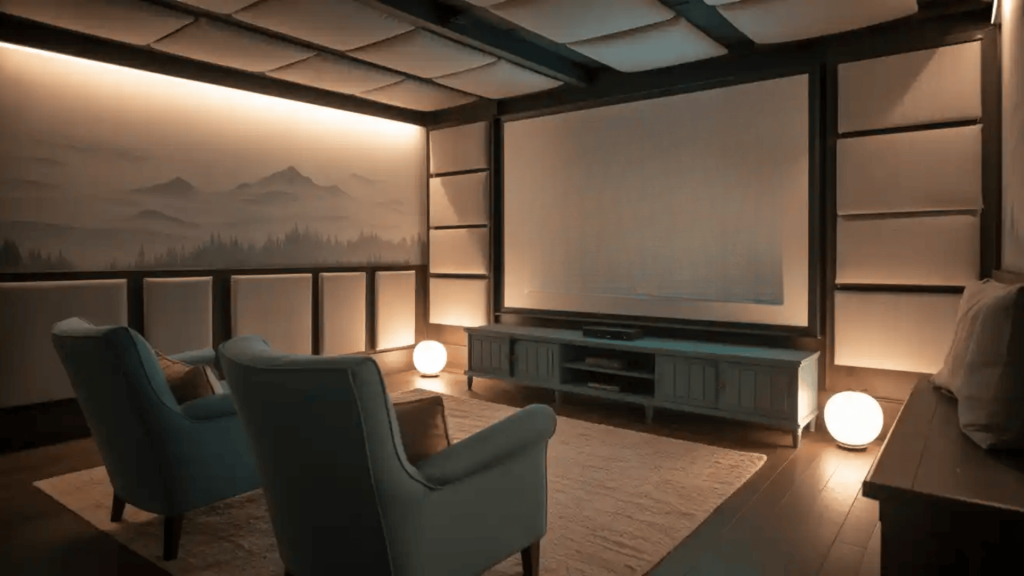
Acoustic panels can be made using fabric-wrapped foam boards. Painted murals or stenciled designs add personality without expensive wallpaper.
Repurposed furniture can be transformed with spray paint and new fabric. Homemade screens using projection fabric and wooden frames cost much less than store-bought options.
14. Smart Spending
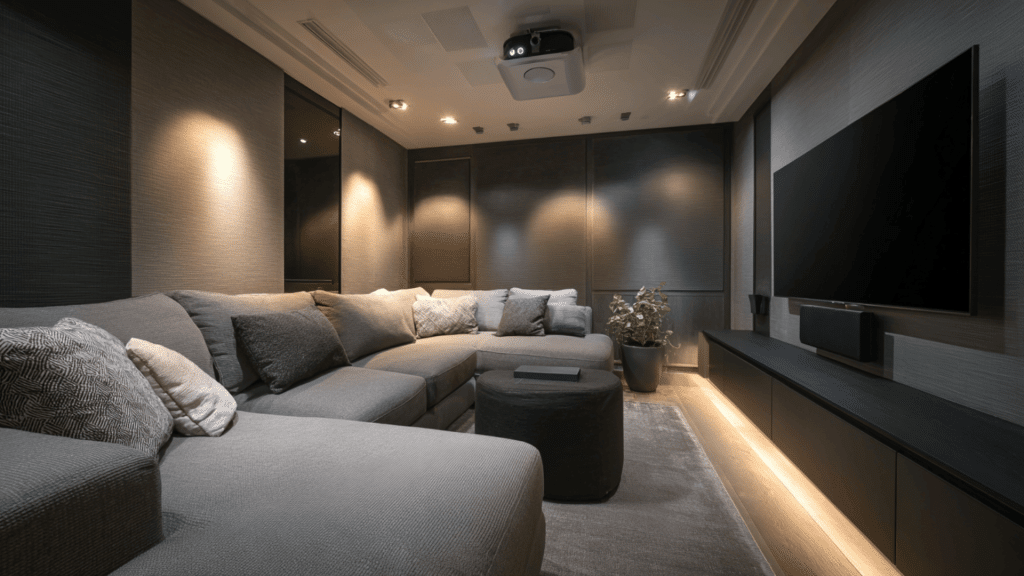
Invest in quality seating that will last. Good projectors or large TVs provide the foundation for your entertainment.
Sound systems make the biggest difference in creating a real theater experience. Automated systems for lights and temperature may cost more upfront, but provide convenience and save energy.
15. Soundproofing for a Better Viewing Experience
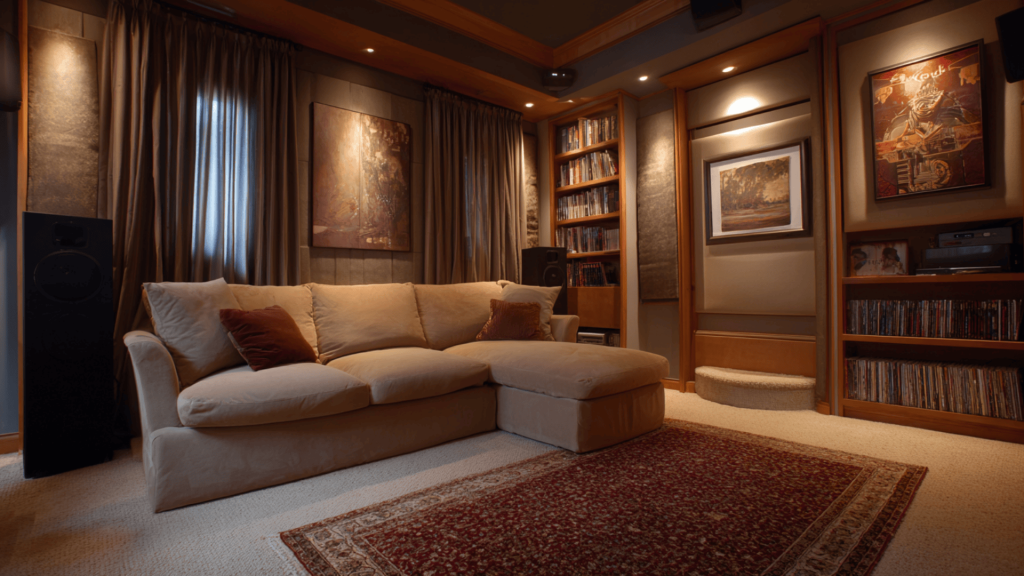
In a small home theater, sound quality matters just as much as visuals. Adding simple soundproofing can make a big difference.
Thick curtains, fabric wall panels, or even area rugs can help absorb sound and reduce echo. Sealing door gaps and using solid-core doors can keep sound contained, so movie night doesn’t disturb the rest of the house.
Even everyday items like bookshelves or decorative wall hangings can help dampen noise while adding to your theater’s look. These upgrades create a more immersive experience without breaking your budget.
Final Thoughts
Building a great small home movie theater means striking a balance between aesthetics and functionality. The key is planning carefully to use every square foot while creating an immersive experience.
Plan each step carefully. Don’t be afraid to make bold choices that create a dramatic atmosphere, making movie nights truly special.
Your small home movie theater should reflect your style while serving your family’s needs. With the right approach, your small space can become the favorite room in your house – a place where regular movie nights become extraordinary experiences.
Remember, the best theater is one that works for your family. Take your time, plan well, and enjoy the process of creating your perfect movie-watching space.
Comment below with your favorite home theater ideas or plans; we’d love to hear how you’re bringing movie magic to your home!

